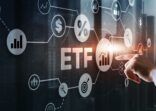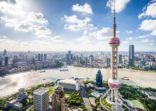Eastspring predicts US equities to derate as much as more than1 5 % this year, which forms the basis of the Singapore-based asset manager.
“We expect the S&P 500 to derate to at least its long-term (35-year) average and more likely to below this,” said Vis Nayar, chief investment officer at Eastspring Investments.
Eastspring estimate that the Trump administration’s policy, including less immigration, cuts to Federal spending and employment, and a roughly 20 percentage point increase in the US’ effective tariff rate will reduce US growth to sub-1% this year with a negative effect on corporate earnings.
“This sharp fall in the US growth trajectory and slower rate of earnings growth no longer justify US equities’ premium valuations,” said Nayar.
As the US economy slows and risk of a recession rises, government bond yields are likely “to grind lower over the course of the year”. Most central banks, including the Federal Reserve, will cut policy rates significantly, pulling down yield levels, according to Eastspring Investments’ chief economist Ray Farris (pictured).
Meanwhile, policy rates are already easing rapidly in Asia.
The Reserve Bank of India cut last week, Korea’s government announced a $2bn fiscal support plan, and the Monetary Authority of Singapore eased again. Nayar and Farris believe the Bank of Korea and Bank of Thailand will cut interest rates again in the coming months.”
“Asian markets are trading just under historic average valuations and so relatively defensive,” said Nayar.
His focus is countries that can deliver policy stimulus to offset some of the tariff shock, markets where company specific factors are pushing up return on equity, and low volatility equity strategies to manage risk.
“India stands out to us as being well positioned to weather the tariff shock this year,” said Nayar
Farris recognises that tariffs reduce Japan’s growth potential this year, particularly the auto tariffs, and he now expect GDP growth of only 0.6% – 0.8%, down from 1.1% previously.
“However, rising wage growth should allow a bounce in consumption growth that works to offset some of the hit from tariffs,’ he said.
Farris and Nayar agree that China is “tricky for investors because of the large headwind to growth that tariffs imply”.
However, the 2% of GDP worth of fiscal stimulus at the NPC last month is likely to increase to maintain GDP growth above 4%.
“This implies large support for consumption, accelerated purchases of idle property, and increased investment in industry, particularly in technology,” they said.

















